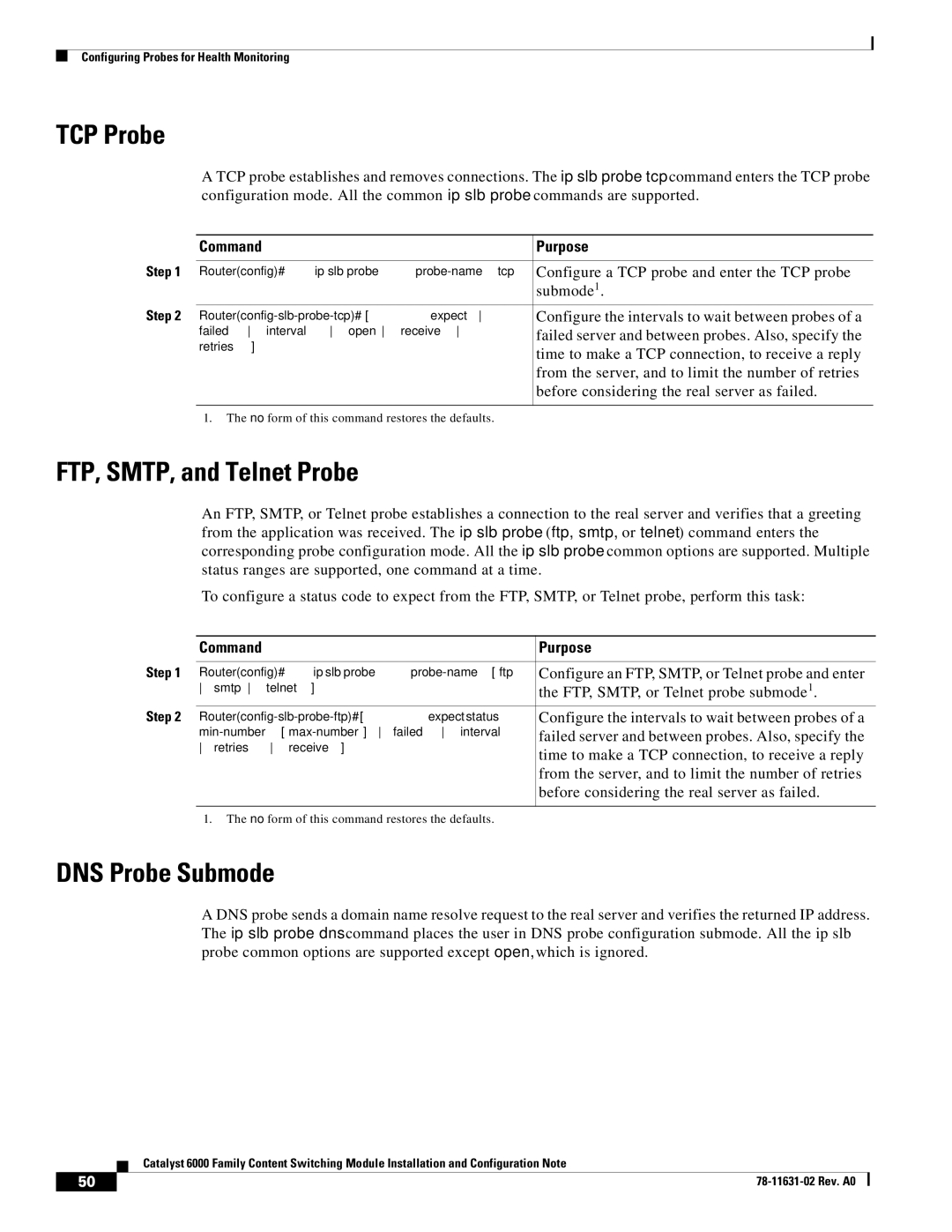
Configuring Probes for Health Monitoring
TCP Probe
A TCP probe establishes and removes connections. The ip slb probe tcp command enters the TCP probe configuration mode. All the common ip slb probe commands are supported.
| Command | Purpose |
Step 1 |
|
|
Router(config)# ip slb probe | Configure a TCP probe and enter the TCP probe | |
|
| submode1. |
Step 2 | Configure the intervals to wait between probes of a | |
| failed interval open receive | failed server and between probes. Also, specify the |
| retries] | time to make a TCP connection, to receive a reply |
|
| |
|
| from the server, and to limit the number of retries |
|
| before considering the real server as failed. |
|
|
|
1.The no form of this command restores the defaults.
FTP, SMTP, and Telnet Probe
An FTP, SMTP, or Telnet probe establishes a connection to the real server and verifies that a greeting from the application was received. The ip slb probe (ftp, smtp, or telnet) command enters the corresponding probe configuration mode. All the ip slb probe common options are supported. Multiple status ranges are supported, one command at a time.
To configure a status code to expect from the FTP, SMTP, or Telnet probe, perform this task:
| Command | Purpose |
Step 1 |
|
|
Router(config)# ip slb probe | Configure an FTP, SMTP, or Telnet probe and enter | |
| smtp telnet] | the FTP, SMTP, or Telnet probe submode1. |
Step 2 |
|
|
Configure the intervals to wait between probes of a | ||
| failed server and between probes. Also, specify the | |
| retries receive] | time to make a TCP connection, to receive a reply |
|
| |
|
| from the server, and to limit the number of retries |
|
| before considering the real server as failed. |
|
|
|
1.The no form of this command restores the defaults.
DNS Probe Submode
A DNS probe sends a domain name resolve request to the real server and verifies the returned IP address. The ip slb probe dns command places the user in DNS probe configuration submode. All the ip slb probe common options are supported except open, which is ignored.
| Catalyst 6000 Family Content Switching Module Installation and Configuration Note |
50 |
